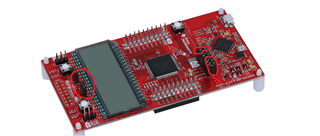Other Parts Discussed in Thread: ENERGYTRACE
I create this thread not to ask question but to answer one: How the h*** do I test and prove low power MSP430's are really low power. I have a FR6989 launchpad and it was really frustrating to try low power modes and seeing 2 mA on Energy Trace. Energy Trace was also showing high current with intended LPM. Obviously I checked everything on the internet but couldn't find complete set of instructions on how to prove those legendary sub-1microAmpere values.
Energy Trace or variants: Looks good, doesn't work for my Low Power mode trials. I had reliable 2 mA anytime I used those tools. Too late I realized it was taking powering the debug board also(not only our board). I have read somewhere that Energy Trace should subtract the debug related currents but my brain might be playing games to me. People are saying use Energy Trace mode without jumpers but without jumpers, I can not start Energy Trace, at least not in CCS Theia. Reliable way of starting Energy Trace and Energy Trace++ with CCS Theia is starting debug mode properly with all jumpers connected, then Energy Trace buttons become active.
Instructions for Proving Current Draw less than 1 uA
1. Remove all the jumpers
2. Power your board with 3.3 V battery(or close ones, like 3.7 Li-Ions etc). Using 5V spends more power due to voltage regulator.
3. Use one of the examples provided by TI. I had used msp430fr69xx_lpm3_03 example. Build and load release mode of your software. To be honest, I didn't test debug version in my successful run because it is too late in Europe.
3. Put your multimeter properly on your battery cables.
4. Enjoy your test with your own multimeter. I shed tears when I saw 0.8 uA on the LCD screen.
Next Test: Trying the same with coin battery and then, trying even lower power modes.
Now I can sleep well. But, can someone give me link to a definitive guide on how to properly see the same results in Energy Trace modes(whether it works with Theia version also.). Step by step, like I am 5 years old. I can definitely make a case that TI is obscure on these low power guides and there are tons of questions on forums with high power on lower device/examples. Most of those threads have obscure advice or unanswered.



